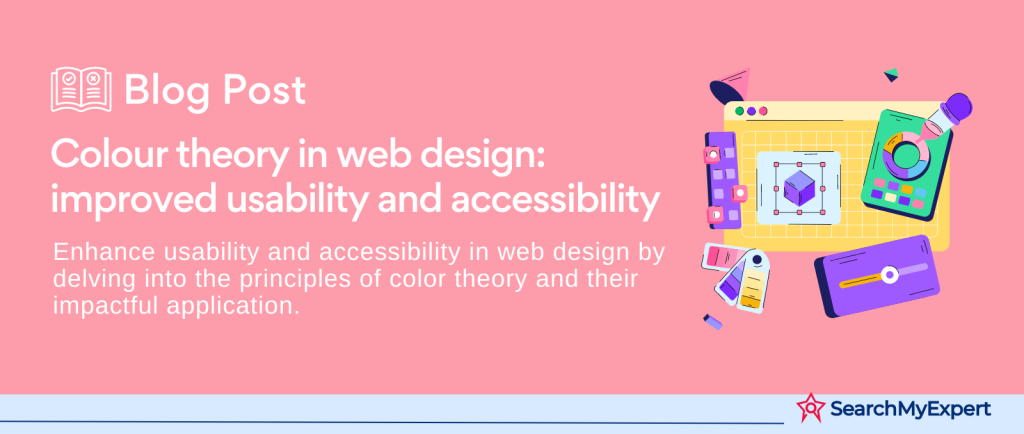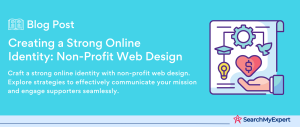Understanding the Power of Color Theory in Web Design
Color theory, a fundamental concept in the realm of design, plays an especially pivotal role in web design. It’s not merely about choosing appealing colors; it’s an in-depth understanding of how colors interact and the impact they have on users. At its essence, color theory guides the use of color combinations to create a visually harmonious and effective design.
The Significance of Color in Web Design
In web design, color theory transcends beyond aesthetic appeal. It’s a critical tool for communicating a brand’s message, evoking specific emotions, and influencing user behavior. Here’s how:
- Impacting User Experience: Colors can significantly enhance or detract from a user’s experience on a website. They play a key role in readability, usability, and accessibility. Thoughtfully chosen colors can create a comfortable and engaging environment, encouraging visitors to stay longer and explore more.
- Shaping Brand Perception: The colors of a website can effectively communicate a brand’s personality and values. Each color carries specific connotations and emotions – for instance, blue often denotes professionalism and trustworthiness, while green is associated with growth and calmness. The right color palette can reinforce brand identity and make a lasting impression on users.
- Influencing Conversion Rates: The strategic use of color can be a powerful tool in guiding user actions and decisions. Colors can draw attention to key elements like call-to-action buttons or special offers, influencing the conversion rate of a website. For example, a vibrant color might be used to make a ‘Sign Up’ button stand out, or a calming color might be used to create a sense of security during checkout.
Color Theory: More Than Just Aesthetics
It’s crucial to understand that color theory in web design is not just about making things look pretty. It’s about using color as a strategic tool to create a user-friendly, memorable, and effective website. The right color choices can enhance navigation, direct attention, and even affect mood and perception. This makes color theory an essential aspect of web design that significantly impacts user experience, brand perception, and conversion rates.
Navigating the Color Wheel: Crafting the Perfect Palette for Web Design
The color wheel is an indispensable tool in the realm of web design, serving as the foundation for creating color schemes that are both aesthetically pleasing and effective in communication. Understanding the color wheel is crucial for harnessing the full potential of colors in web design.
Primary, Secondary, and Tertiary Colors: The Building Blocks
- Primary Colors: Red, blue, and yellow are the primary colors. They are the original source colors, which cannot be created by mixing other hues. In web design, these colors are often used to grab attention or create a bold statement.
- Secondary Colors:
Created by mixing two primary colors in equal parts, secondary colors include green (blue + yellow), orange (red + yellow), and purple (red + blue). These colors offer more nuanced options in design, allowing for a balance between boldness and subtlety. - Tertiary Colors: These are formed by mixing a primary color with a secondary color adjacent to it on the color wheel. Tertiary colors, like red-orange or blue-green, provide even more diversity and depth, allowing for sophisticated and nuanced color palettes.
Complementary, Analogous, and Triadic Color Schemes
- Complementary Color Scheme:
This involves using colors that are opposite each other on the color wheel, such as blue and orange. Complementary colors create high contrast and vibrancy, making them ideal for highlighting key elements on a website. - Analogous Color Scheme: Analogous colors are next to each other on the wheel, like blue, blue-green, and green. This scheme offers more harmony and is less contrasting, creating a cohesive and serene look that’s pleasing to the eye.
- Triadic Color Scheme:
This scheme uses three colors that are evenly spaced around the color wheel, such as red, yellow, and blue. It provides a vibrant palette while maintaining balance and harmony.
Harnessing Color Harmonies to Evoke Moods and Feelings
Color harmonies play a pivotal role in setting the mood and tone of a website. They can evoke various emotions and feelings:
- Warm Colors:
Reds, oranges, and yellows are warm colors that evoke feelings of warmth, comfort, and energy. They are often used to stimulate action or draw attention. - Cool Colors:
Blues, greens, and purples, known as cool colors, create a sense of calm, trust, and professionalism. They are excellent for corporate or health-related websites where trust and serenity are important. - Neutral Colors:
Blacks, whites, grays, and browns are neutral and work well as background or balancing colors. They help in highlighting other colors and creating a sophisticated, modern look.
The effective use of color harmonies can significantly impact the emotional response and engagement levels of website visitors. By carefully selecting and combining colors based on the color wheel and these harmonies, web designers can create visually appealing sites that effectively communicate the intended message and evoke the desired emotional response.
Harnessing the Power of Color Psychology in Web Design
Color psychology is an intriguing and influential aspect of web design, deeply affecting user perceptions and behaviors. Understanding how different colors impact emotions and decision-making can transform a website into a more effective and engaging digital experience.
The Emotional Influence of Different Colors
- Red: Known for its intensity, red can evoke strong emotions ranging from love and passion to danger and urgency. It’s often used in call-to-action buttons, sale banners, or alerts, as it draws immediate attention and can spur users to action.
- Blue: A color of trust, calm, and professionalism, blue is widely favored in corporate and financial website designs. It creates a sense of security and reliability, ideal for businesses aiming to build trust with their audience.
- Green: Often associated with nature, health, and tranquility, green is used to promote environmental and wellness-related products or services. It also signifies growth and prosperity, making it suitable for finance-related websites.
- Yellow:
A color of happiness, optimism, and youthfulness, yellow can be used to grab attention and evoke a sense of positivity. However, its brightness can be overpowering if overused, so it’s typically used for highlights and accents. - Orange:
A blend of red’s passion and yellow’s joy, orange is energetic and inviting. It’s effective for call-to-action elements, promoting a friendly and approachable feel. - Purple: Symbolizing luxury, creativity, and mystery, purple is often used in beauty, luxury, and innovative technology websites. It provides a sophisticated and unique feel.
Guiding User Behavior and Decision-Making Through Color
Color not only influences mood but also guides user behavior and decision-making on websites:
- Navigational Cues: Different colors can be used for hyperlinks, buttons, and navigation menus to guide users through the website intuitively.
- Highlighting Key Information: Bright or contrasting colors draw users’ attention to important information or actions, such as special offers or subscription forms.
- Creating the Right Atmosphere:
The overall color scheme sets the tone of the website, influencing how users feel and respond. For example, a minimalist and neutral palette can create a modern, clean feel, encouraging focus on content.
Real-World Examples of Color Psychology in Brand Websites
- Apple:
Apple’s website uses a sleek, neutral color palette with plenty of whites and grays, reflecting its brand identity of simplicity and innovation. - Nike:
Nike often employs bold and contrasting colors like black, white, and red to create a dynamic, energetic feel that resonates with their brand ethos of action and excellence. - Starbucks: Starbucks uses green as its primary color, symbolizing growth and a relaxing environment, aligning with its brand as a place for rejuvenation and social interaction.
Ensuring Web Accessibility: The Crucial Role of Color Choices
Web accessibility is a fundamental aspect of inclusive design, ensuring that digital content is usable by everyone, including individuals with visual impairments or other disabilities. Color choices play a vital role in this, as they can significantly impact the readability and navigability of a website.
Understanding the Impact on Users with Visual Impairments
For users with color blindness or other visual impairments, certain color combinations can be challenging to differentiate. This can make it difficult to read text, understand visual cues, or interact with the website effectively. Therefore, it’s essential to choose color palettes that provide sufficient contrast and are easily distinguishable.
WCAG Guidelines for Color Contrast
The Web Content Accessibility Guidelines (WCAG) set standards for digital accessibility. Regarding color contrast, they recommend:
- Minimum Contrast Ratios: For regular text, the WCAG suggests a contrast ratio of at least 4.5:1 against its background. For large text, the ratio can be reduced to 3:1.
- Non-Text Contrast: For graphical elements and user interface components, a contrast ratio of at least 3:1 is recommended to ensure visibility and readability.
Tips for Creating an Accessible Website
- Contrast is Key:
Ensure that text stands out against background colors. High contrast, such as black text on a white background, is often the most readable. - Avoid Color-Only Information:
Do not rely solely on color to convey information. Use text labels or patterns to supplement color cues. - Test for Color Blindness Accessibility: Use tools to simulate how your website appears to users with different types of color blindness.
- Consistent Navigation:
Use color consistently for navigation and links to help users predict where to find information. - Focus on User Experience: Regularly gather feedback from users with disabilities to understand how they interact with your site and where improvements can be made.
Resources and Tools for Checking Color Contrast and Accessibility
Several tools and resources are available to help designers ensure their websites meet accessibility standards:
- WebAIM Color Contrast Checker: A popular tool for testing color contrast ratios against WCAG guidelines.
- Color Oracle:
A free color blindness simulator for Windows, Mac, and Linux, which helps designers see how their designs are perceived by those with common color vision impairments. - WAVE Web Accessibility Evaluation Tool:
Provides visual feedback about the accessibility of your web content by highlighting potential issues.
By integrating these guidelines and tools into the web design process, designers can create more accessible websites. This not only improves the user experience for individuals with visual impairments but also enhances the overall usability and inclusivity of the digital space.
Applying Color Theory Effectively: Enhancing Website Design Elements
Color theory, when applied skillfully, can dramatically improve the effectiveness and appeal of a website. This section offers practical tips for using color in various website elements, such as backgrounds, text, buttons, and images, to create hierarchy, emphasize key elements, and guide user navigation.
Color in Backgrounds
- Set the Right Tone: Choose background colors that complement the overall theme and purpose of the website. For instance, use light or neutral colors for a professional site and vibrant colors for a more creative or energetic site.
- Contrast for Readability:
Ensure there is enough contrast between the background color and text for readability. Dark text on a light background or vice versa is usually most effective.
Color in Text
- Legibility is Paramount: Maintain high contrast between text and its background. Avoid colors that clash or are too similar.
- Emphasize with Color:
Use color to highlight important information, such as key headings or calls to action. Bold colors can draw attention, but use them sparingly to avoid overwhelming the user.
Color in Buttons and Calls to Action
- Stand Out with Color:
Use contrasting and vibrant colors for buttons, especially for important calls to action, to make them stand out and encourage clicks. - Consistency is Key:
Keep button colors consistent throughout the site to help users recognize interactive elements quickly.
Color in Images
- Complement and Enhance:
Choose images with colors that complement the overall color scheme of the site. This creates a cohesive and harmonious look. - Balance and Contrast:
Ensure images don’t clash with background colors or text. Balance is essential to maintain the site’s visual appeal.
Using Color to Create Hierarchy and Guide Navigation
- Visual Hierarchy:
Use color to create a visual hierarchy. Brighter or contrasting colors can draw attention to more important elements, guiding users through the content in a logical order. - Navigational Clues: Differentiate navigation menus, links, and other interactive elements with color to make them easily identifiable.
Examples of Effective Use of Color Theory in Web Design
- Airbnb:
Airbnb uses a warm and inviting color palette, with red as a prominent color, reflecting its brand identity of hospitality and adventure. The use of red for call-to-action buttons is particularly effective in drawing attention. - Dropbox:
Dropbox employs a minimalistic color scheme with plenty of whites and blues, creating a clean and professional look. The blue hues evoke a sense of trust and reliability, aligning with their brand as a secure cloud storage solution. - Spotify:
Spotify’s website showcases a dark background with vibrant accent colors, reflecting its energetic and dynamic nature. The use of bright greens for calls to action and highlights aligns well with its brand identity.
Navigating Emerging Trends and Techniques in Web Design Color Usage
Emerging Trends in Color for Web Design
- Bold and Vibrant Colors:
There’s a growing trend towards using bold and vibrant colors to create striking and memorable web experiences. These colors help websites stand out in a crowded digital space. - Dark Mode: The popularity of dark mode interfaces continues to rise, offering a stylish look while reducing eye strain. It often involves using dark background colors with light text and vibrant accent colors.
- Colorful Minimalism: Combining minimalist designs with pops of color creates a clean yet visually interesting website. This trend focuses on simplicity without sacrificing color.
Innovative Use of Gradients, Textures, and Patterns
- Gradients: Gradients add depth and dimension to web design. They can be subtle, providing a soft background, or bold, creating a vibrant focal point.
- Textures and Patterns: Textures and patterns add character and depth to web designs. When used judiciously, they can enhance the overall aesthetic without overwhelming the content.
- Micro-Interactions:
Using color changes in micro-interactions (like hover effects) can make the website more engaging and intuitive for users.
Tools and Resources for Exploring Color Combinations
- Adobe Color: A powerful tool for creating and exploring color schemes, allowing users to test and adjust different combinations easily.
- Coolors: A user-friendly color scheme generator, perfect for quickly creating harmonious color palettes.
- Color Hunt:
Offers a variety of trendy color palettes created by a community of designers and artists.
Summarizing the Essence of Color Theory in Web Design
Color theory is not just an artistic concept; it’s a vital tool in web design that influences user experience, brand perception, and conversion rates. It involves understanding the psychological effects of colors, creating accessible designs, and applying practical color strategies to various website elements.
Final Tips for Effective Color Usage
- Balance and Harmony: Aim for a balanced and harmonious color scheme that aligns with your brand and enhances the user experience.
- Test and Iterate: Continuously test different color combinations and gather user feedback to refine your design.
- Accessibility Matters:
Always consider accessibility when choosing colors, ensuring your website is usable for everyone.
Encouragement for Further Exploration
Exploring and experimenting with color theory is a journey of continuous learning. Each project presents a new opportunity to apply these principles and discover what works best. By embracing the nuances of color theory, you can create websites that are not only visually appealing but also effective in achieving their intended purpose. Dive into the world of colors and let your creativity flow to build unique and engaging web experiences.
Conclusion
Color theory is a fundamental aspect of web design, deeply influencing how users interact with and perceive a website. From understanding the basics of the color wheel to applying color psychology and ensuring accessibility, every aspect of color usage plays a pivotal role in creating a successful online presence. The emerging trends in color usage, such as bold colors, gradients, and dark mode, provide exciting opportunities for designers to innovate and stand out. By employing the right tools and resources, designers can experiment with different palettes to find the perfect combination for their projects.
Build a web presence that stands out with Web Design Firms.
Table of Contents
Toggle






